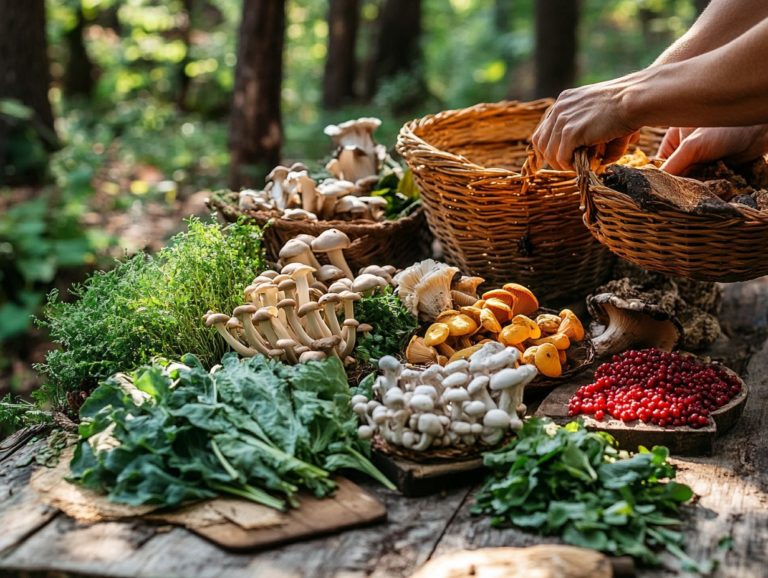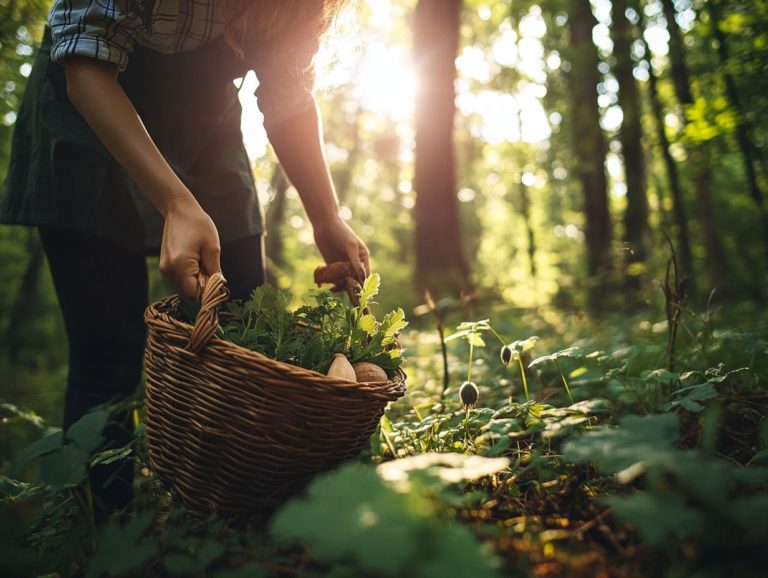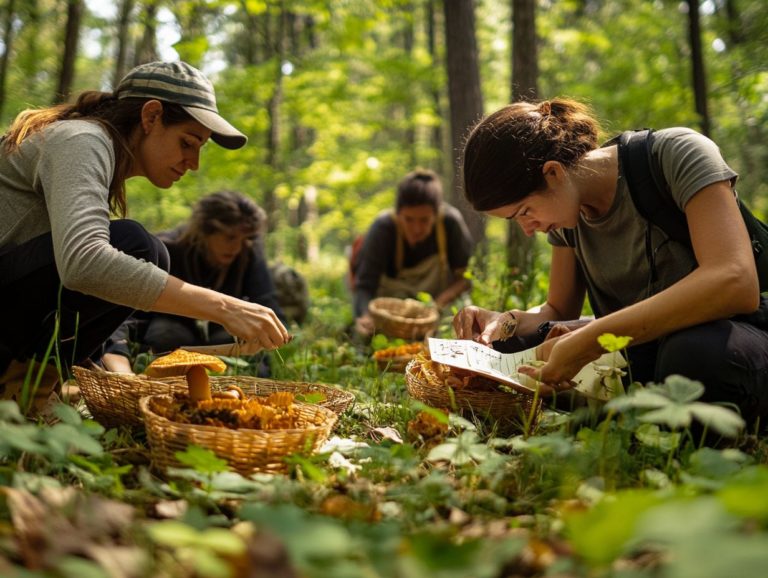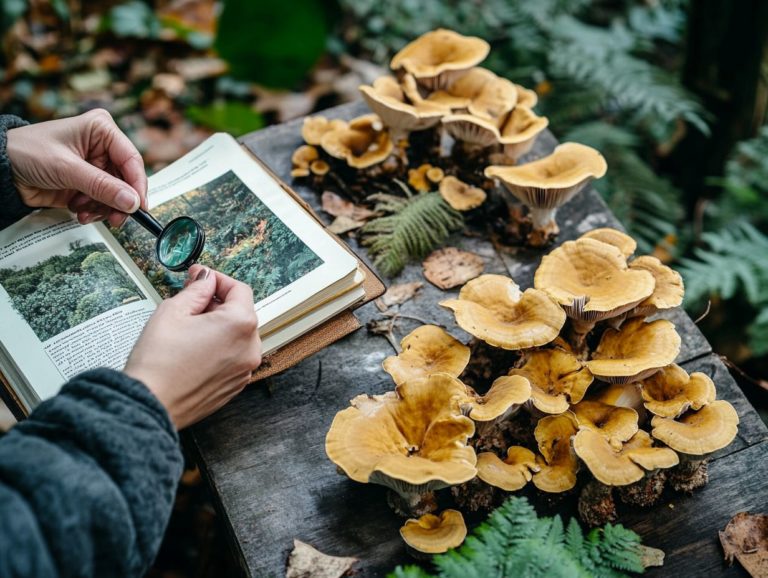How to Identify Edible Seaweeds?
Edible seaweeds are not just a passing trend; they are a fantastic source of nutrition and flavor. These marine plants are full of vitamins, minerals, and unique health benefits. They come in various forms, each offering distinct characteristics and culinary uses.
Learn how to identify edible seaweeds through seaweed identification. Understand their seaweed nutrition and master safe harvesting seaweed techniques. Whether you’re a curious food lover or a seasoned chef, dive into the captivating world of seaweeds and explore how to seamlessly incorporate them into your meals.
Contents
- Key Takeaways:
- Nutritional Value of Edible Seaweeds
- Identifying Edible Seaweeds
- Types of Edible Seaweeds
- Safety Precautions and Risks
- Harvesting and Preparing Edible Seaweeds
- Frequently Asked Questions
- What are some common signs to look for when identifying edible seaweeds?
- What are the different types of edible seaweeds that can be found in the wild?
- How can I differentiate between edible and inedible seaweeds?
- Are there any visual or physical cues to help identify edible seaweeds?
- What precautions should I take when foraging for edible seaweeds?
- Can I rely solely on visual identification to determine if a seaweed is safe to eat?
Key Takeaways:
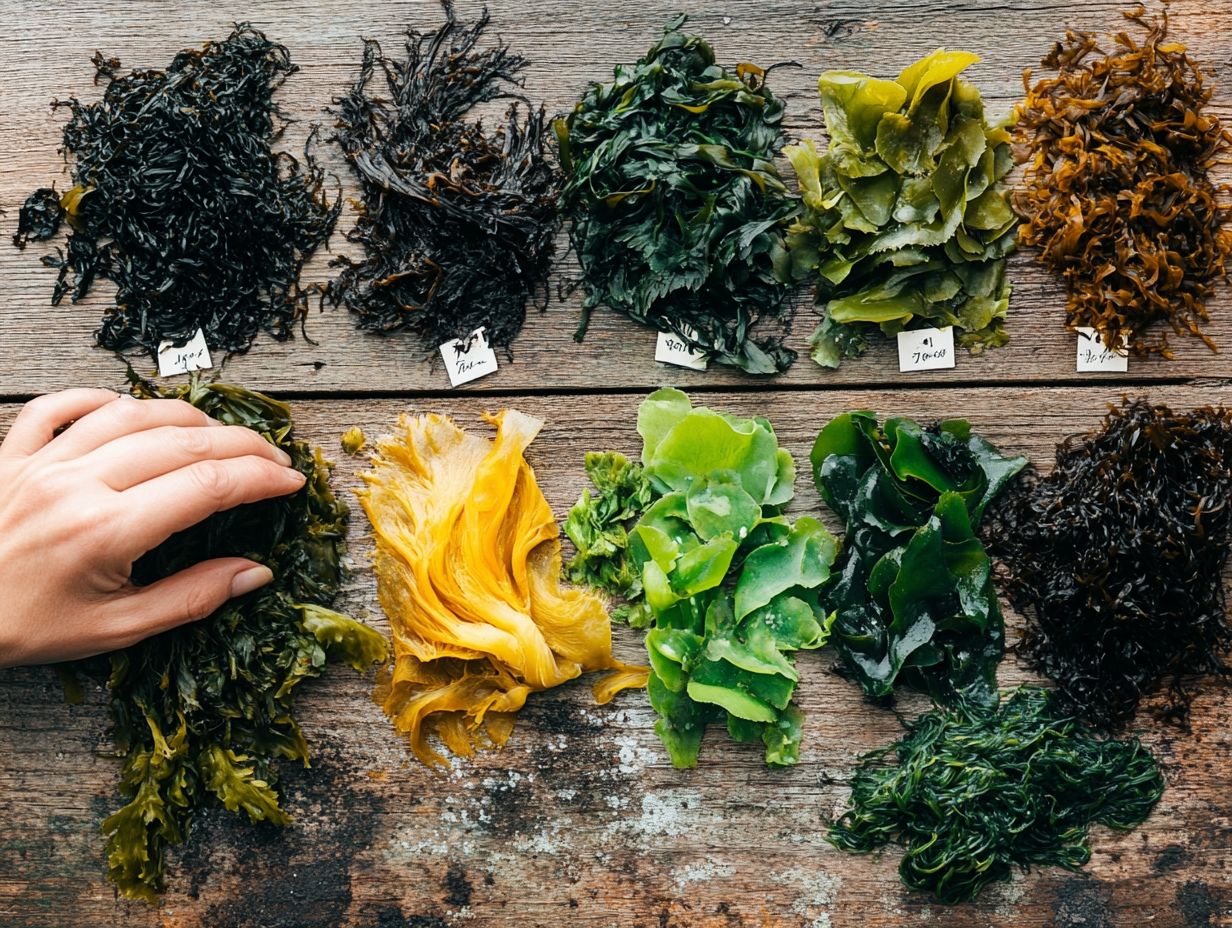
- Edible seaweeds are a nutritious and sustainable food source, rich in key nutrients and health benefits.
- Identifying edible seaweeds requires understanding their physical characteristics and habitat. Follow safety precautions to avoid potential contaminants and allergies.
- Harvesting and preparing edible seaweeds involves best practices for sustainable and delicious dishes.
What are Edible Seaweeds?
Edible seaweeds, like golden kelp (Ecklonia radiata), are fascinating marine plants that thrive in oceanic environments. They flourish particularly in regions marked by tidal zonation the division of the shore based on how often areas are submerged and abundant kelp beds.
These seaweeds are not just staples in various culinary traditions, such as delightful seaweed dishes from the Australian coast; they also play a crucial role in sustaining marine ecosystems. They provide essential nutrients and habitats for countless marine species.
Collecting seaweed is exciting and gaining popularity among enthusiasts who appreciate its nutritional value and culinary versatility. This trend highlights the importance of understanding seaweed preservation and identifying these remarkable organisms.
The variety of edible seaweeds, including nori, dulse, and wakame, is celebrated for their rich umami flavor and impressive nutritional profile. They are loaded with vitamins, minerals, and antioxidants. Beyond their delicious applications in the kitchen, these marine plants significantly contribute to coastal ecosystems. They act as natural water filters and provide habitats for fish and invertebrates.
To ensure this resource remains sustainable, it’s vital to adopt responsible harvesting techniques. Take only small amounts and avoid areas with low growth to help ensure that these essential species thrive for future generations.
By appreciating both the ecological significance and culinary potential of seaweeds, you can cultivate a deeper connection with the marine environment around you.
Nutritional Value of Edible Seaweeds
The nutritional value of edible seaweeds, such as golden kelp (Ecklonia radiata), is truly remarkable. These varieties offer a wealth of vitamins, minerals, and essential compounds that can greatly enhance your health and well-being.
Key Nutrients and Health Benefits
Key nutrients in edible seaweeds, such as iodine, omega-3 fatty acids, and antioxidants, contribute significantly to their remarkable health benefits. This makes them an invaluable addition to your balanced diet.
These sea vegetables are abundant in vitamins A, C, E, and K, alongside essential minerals like calcium and magnesium. These nutrients play crucial roles in your bodily functions. For example, iodine is vital for maintaining a healthy thyroid, while omega-3 fatty acids are known to help reduce inflammation and bolster heart health.
Research has indicated that antioxidants found in seaweeds may combat oxidative stress, potentially lowering your risk of chronic diseases. By incorporating these nutrient-rich wonders into your meals, you elevate the flavor and enrich your diet with a wealth of nutrients that support overall wellness, ultimately fostering a healthier lifestyle.
Identifying Edible Seaweeds
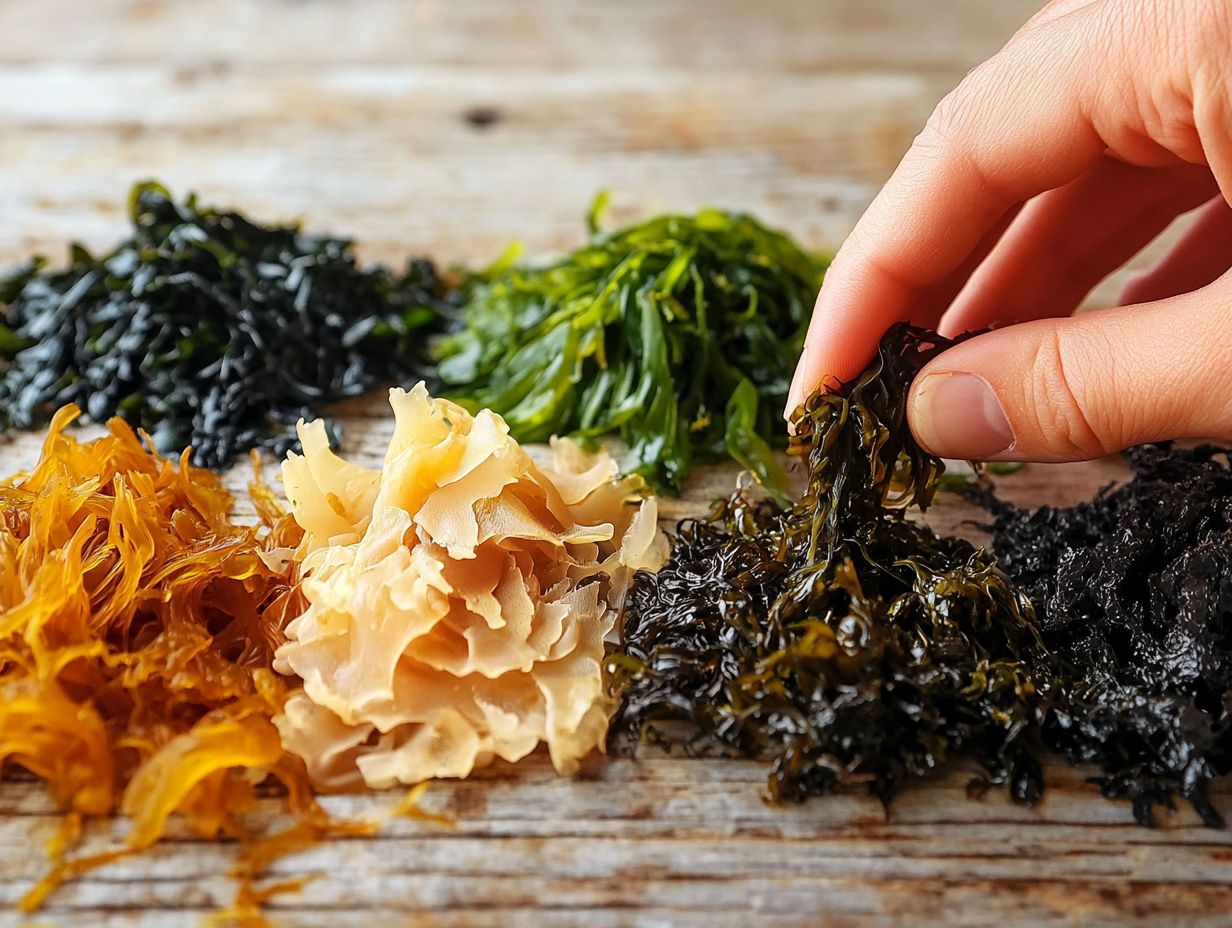
Identifying edible seaweeds is essential for you, whether you’re a seasoned forager or a culinary enthusiast. This knowledge guarantees safe consumption and fosters responsible harvesting practices that safeguard marine ecosystems and their natural habitats. For a comprehensive resource, check out this quick guide to identifying edible seaweeds.
Physical Characteristics and Habitat
The physical characteristics and habitats of edible seaweeds are remarkably diverse. Each species is expertly adapted to its unique environment, whether in areas affected by tides or along rocky shorelines. They play vital roles in marine ecology.
These adaptations showcase amazing traits. For instance, the vibrant hues of red algae thrive in deeper waters. In contrast, the robust, leathery textures of kelp make it well-suited for surf-battered zones. Nori and wakame prefer moderate currents and often cling tenaciously to rocky substrates. Dulse tends to flourish in more sheltered, intertidal locations.
Each species has unique traits. These traits help us identify them and show their role in the ecosystem. They provide habitat, sustenance, and protection for a variety of marine organisms, beautifully showcasing the intricate balance of life within oceanic ecosystems.
Types of Edible Seaweeds
You ll discover a stunning array of edible seaweeds, each with unique flavors and culinary potential. Among these, golden kelp (Ecklonia radiata) stands out, prized for its versatility in a variety of seaweed recipes.
Common Varieties and Uses
Common varieties of edible seaweed, such as golden kelp and nori, are your secret weapons in the kitchen. They are perfect for a wide range of culinary creations from refreshing salads to flavor-packed marinades and delightful snacks.
These marine plants introduce unique flavors and textures. They also boast an impressive nutritional profile, rich in vitamins and minerals. For example, kombu is a staple in Japanese dashi stock, adding a delightful umami depth to soups. Meanwhile, wakame can elevate a seaweed salad with its subtle sweetness.
Recently, chefs have embraced seaweed in gourmet dishes. They transform it into innovative rice bowls or the beloved sushi rolls that everyone craves. Even in the snack department, crispy nori sheets offer a crunchy, healthful indulgence, showcasing the remarkable creativity that this oceanic gem brings to your culinary adventures.
Safety Precautions and Risks
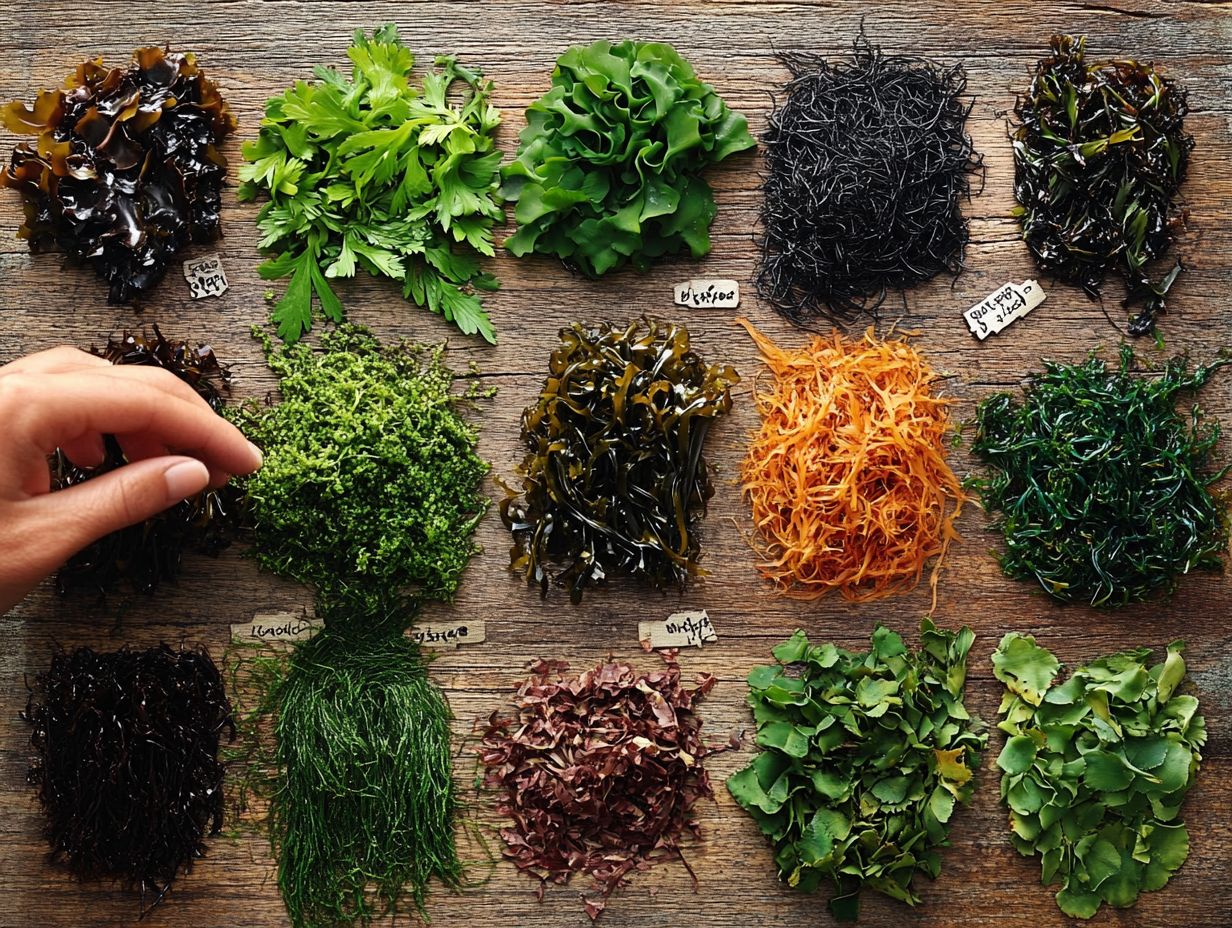
Understanding safety precautions and potential risks is crucial as you explore seaweed foraging. Edible seaweeds can sometimes harbor contaminants or trigger allergies if they aren t correctly identified and prepared.
Being well-informed will ensure a safe and enjoyable experience.
Potential Contaminants and Allergies
When foraging for or consuming edible seaweeds, you must carefully consider the potential health risks associated with contaminants and allergies tied to certain varieties.
Contaminants can vary widely. They include heavy metals like arsenic and lead, which are often absorbed through water, as well as bacteria and microplastics that may compromise food safety. Some people may experience allergic reactions to specific types of seaweed, resulting in symptoms ranging from rashes to digestive troubles or even respiratory distress in more severe cases.
For those who relish these nutritious marine delicacies, staying informed about safe sourcing practices and guidelines is essential. This knowledge enables you to minimize the ingestion of harmful substances, ensuring that the seaweed you enjoy contributes positively to your health while steering clear of unnecessary risks.
Harvesting and Preparing Edible Seaweeds
Harvesting and preparing edible seaweeds is a refined blend of art and science. Mastering the best practices is essential for ensuring sustainability and quality, and for unlocking creative culinary possibilities, including exquisite seaweed recipes.
So, why not dive into the world of seaweeds? Explore and try foraging for these oceanic wonders!
Best Practices for Harvesting and Cooking
Implementing best practices for harvesting and cooking edible seaweeds maximizes their flavor and nutritional value while championing sustainability and respect for marine environments.
This thoughtful approach invites you to appreciate the delicate ecosystems that surround marine flora. It’s important to leave enough seaweed to ensure continued growth and the overall health of the ocean. When you harvest, remember to take only what you need, carefully avoiding taking too much.
Feel free to get creative with seaweed recipes. Experiment with saut ing or incorporating seaweeds into salads and soups to truly savor their unique textures and flavors. Whether you use them as a seasoning or a main ingredient, your creativity can elevate your dishes while supporting ocean conservation efforts.
Frequently Asked Questions
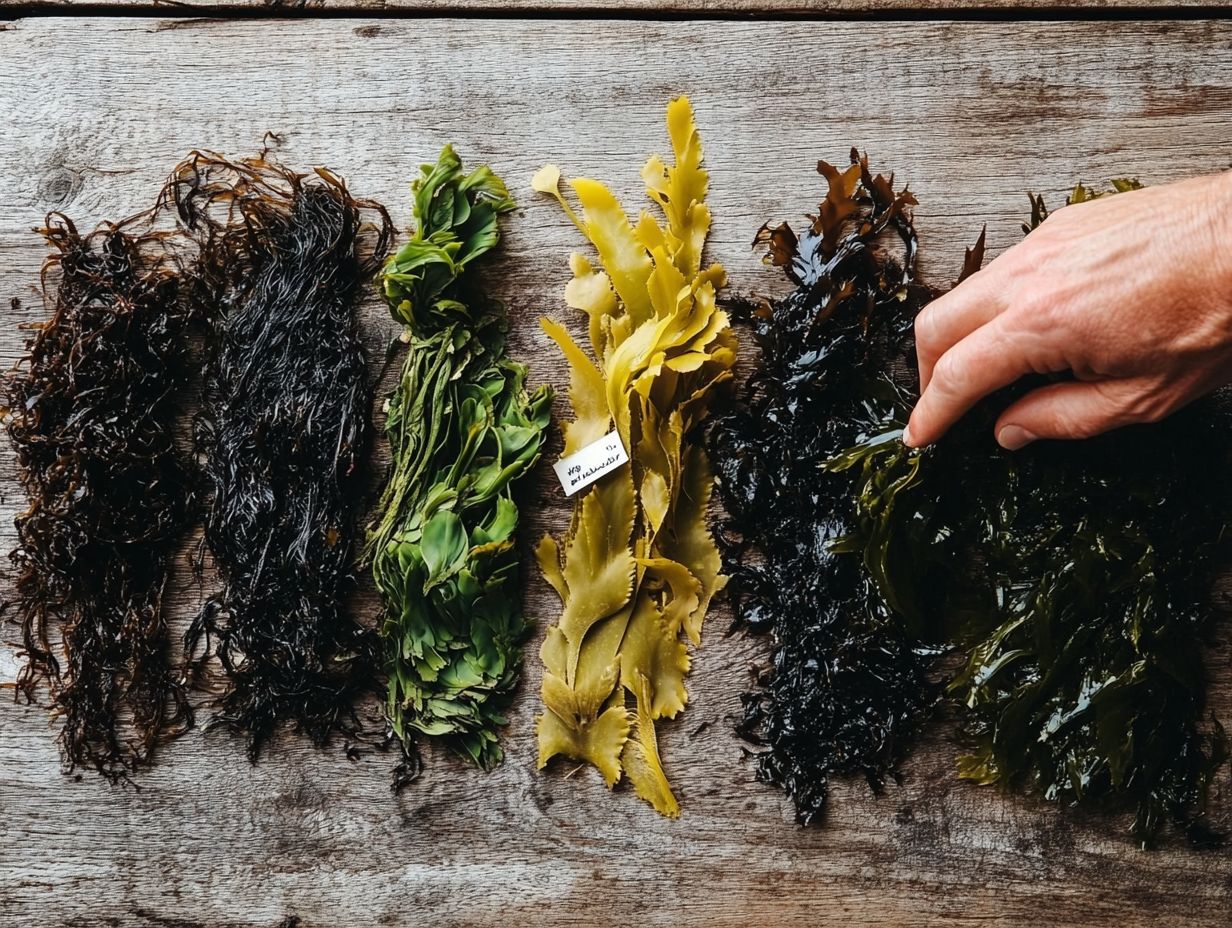
What are some common signs to look for when identifying edible seaweeds?
Some common signs to look for include:
- A firm and pliable texture
- Vibrant color
- A distinctive smell of the ocean, often reminiscent of beach-cast seaweed
Sea Health Products offers supplements that highlight the health benefits of various edible seaweeds found in regions like Queensland and Western Australia. D. Sobel, a marine biologist, has written extensively about the ecological importance of seaweeds in maintaining healthy marine environments across Australia. Oliver provides insights into sustainable practices associated with seaweed harvesting in his articles featured in Bushcraft and Survival Magazine. Mark Williams from the University of Wollongong has researched local seaweeds and their umami (savory) flavor profiles. For those interested in culinary uses, seaweed pickles have gained popularity in recipes, including those found in the Irish Seaweed Kitchen. You can also use seaweed compost in your garden for its environmentally efficient properties and potential benefits.
What are the different types of edible seaweeds that can be found in the wild?
There are several types of edible seaweeds, including:
- Nori
- Dulse
- Kelp
- Kombu
- Wakame
- Ecklonia radiata
Each has its own unique taste and texture, contributing to various seaweed benefits.
How can I differentiate between edible and inedible seaweeds?
The best way to differentiate is to research and educate yourself about the different types and their characteristics, especially concerning mindful harvesting practices. If you are unsure, it is always safer to avoid consuming the seaweed.
Are there any visual or physical cues to help identify edible seaweeds?
Yes! Some visual and physical cues include:
- The presence of air bladders or reproductive structures
- The location where it was found (i.e., closer to shore vs. deeper in the water), particularly in regions like New South Wales, Victoria, and Tasmania
What precautions should I take when foraging for edible seaweeds?
Only forage for seaweeds in clean and unpolluted waters, particularly in marine ecologies protected by Marine Parks. Also, make sure to wash and cook the seaweeds before consuming them.
Can I rely solely on visual identification to determine if a seaweed is safe to eat?
No, it is not recommended to rely solely on visual identification to determine if a seaweed is safe to eat. Proper knowledge and training in seaweed identification are crucial before consuming any type of wild seaweed.
Don’t miss the chance to explore the amazing world of edible seaweeds! Try foraging responsibly and discover new recipes that highlight their unique flavors.

